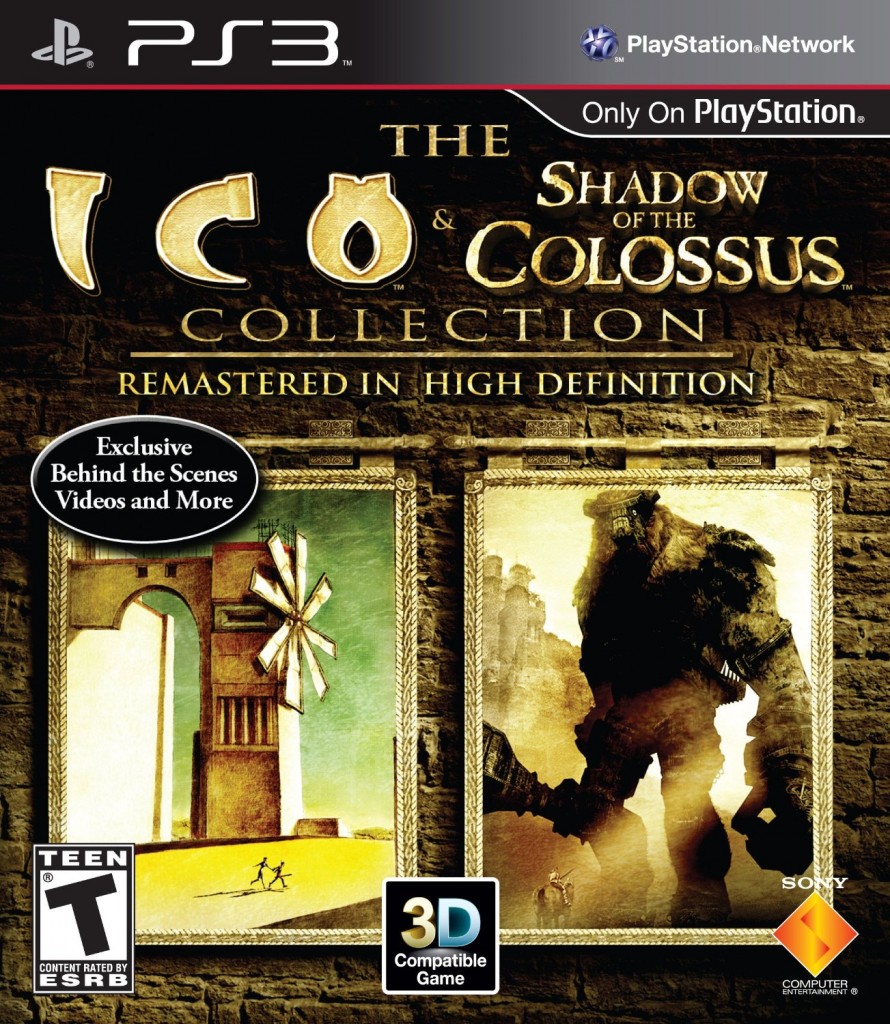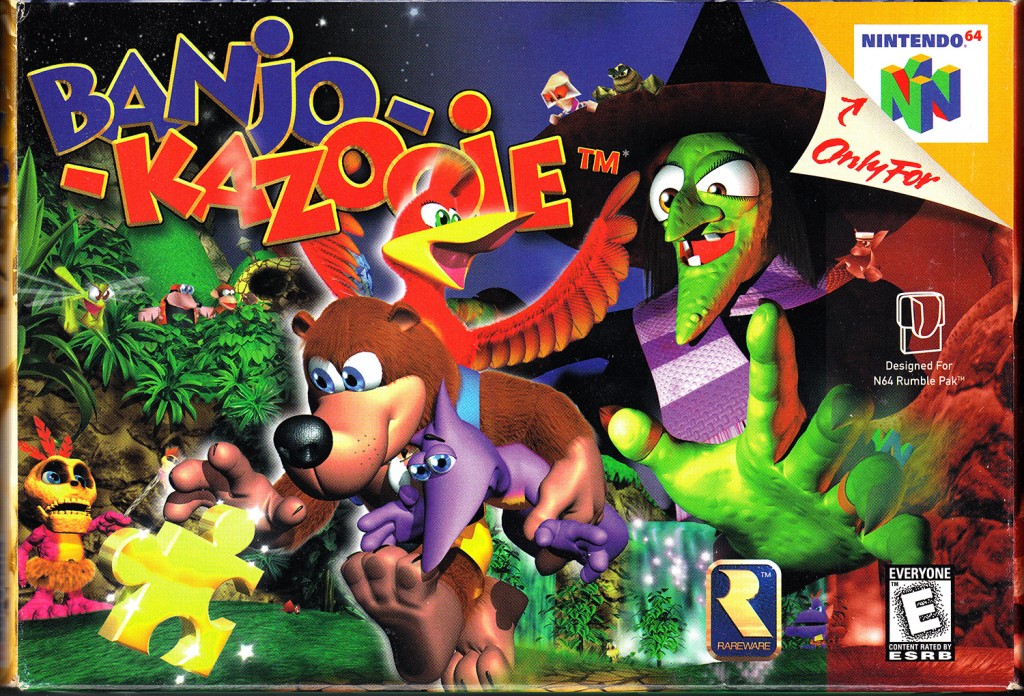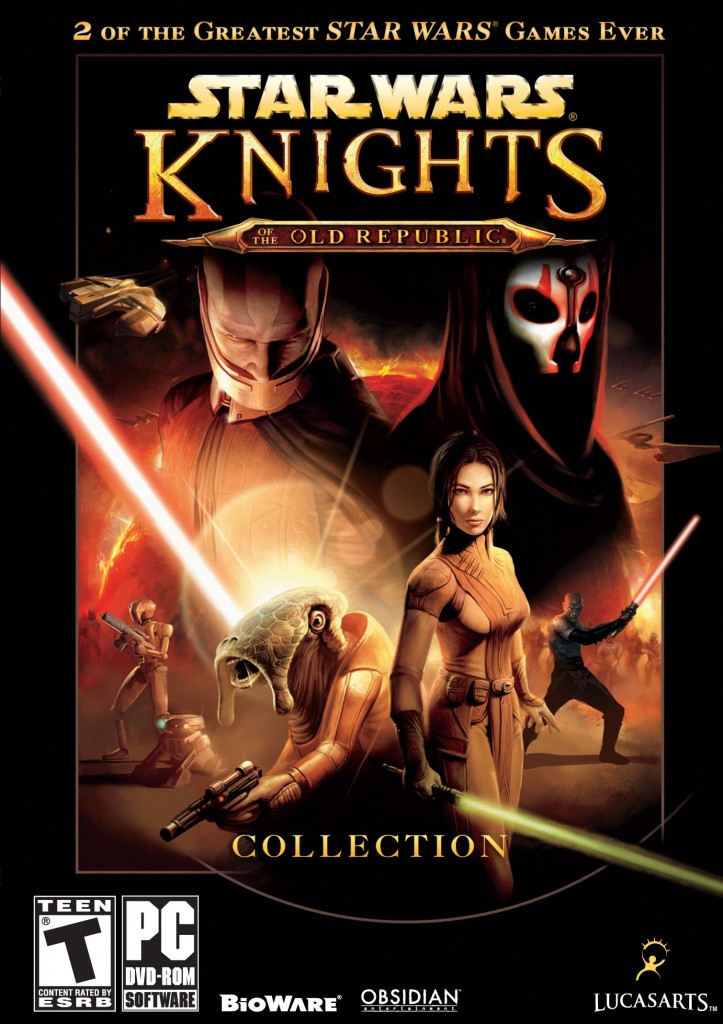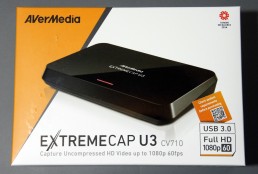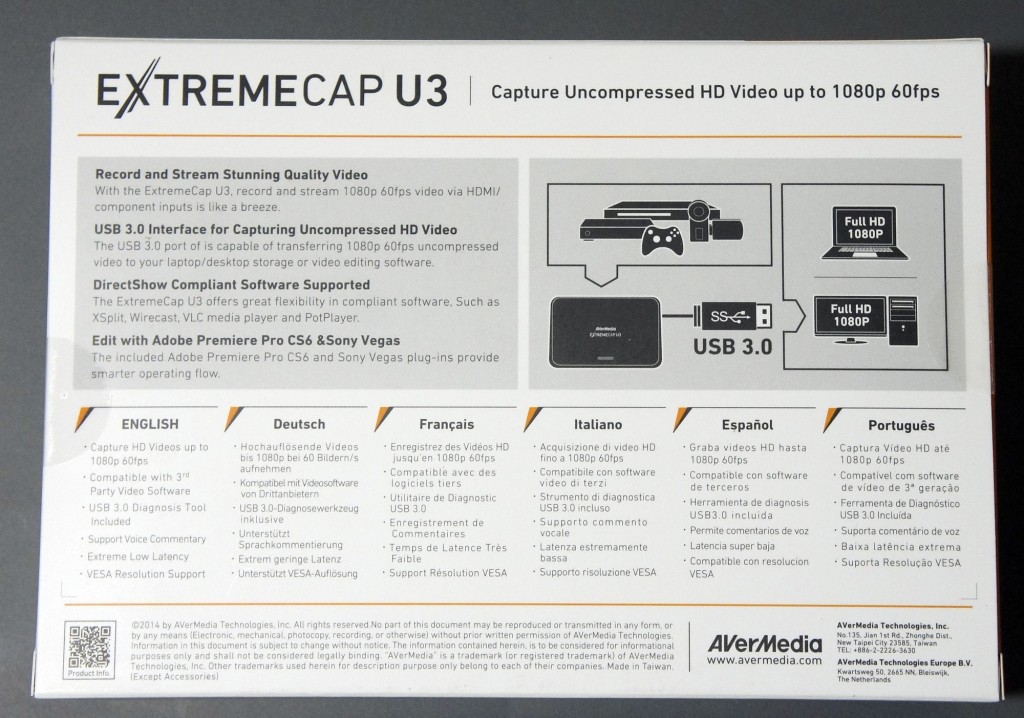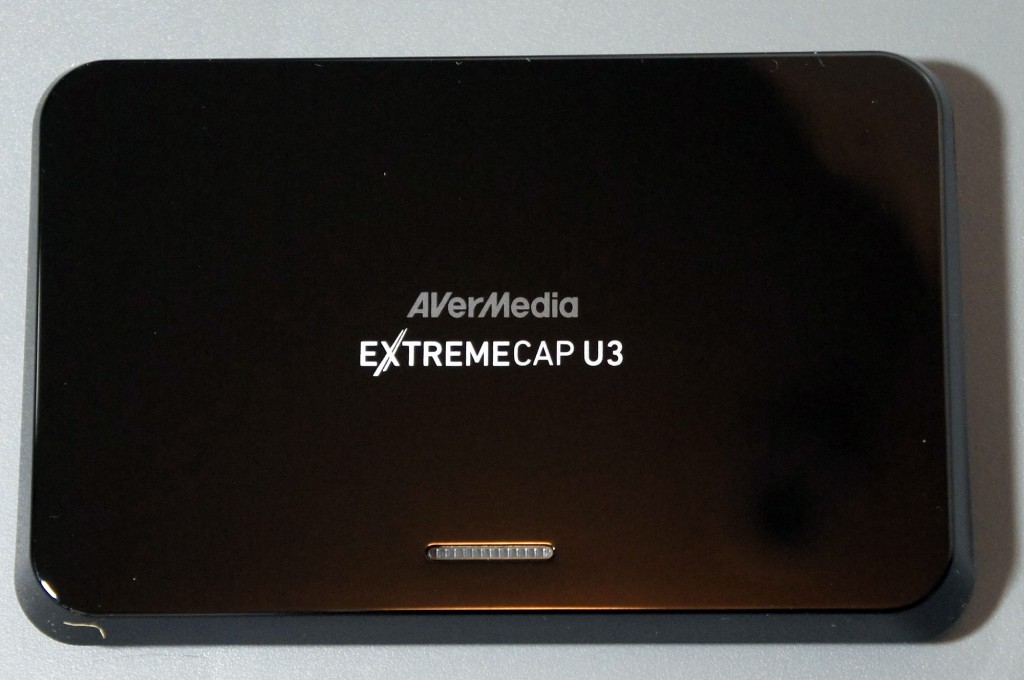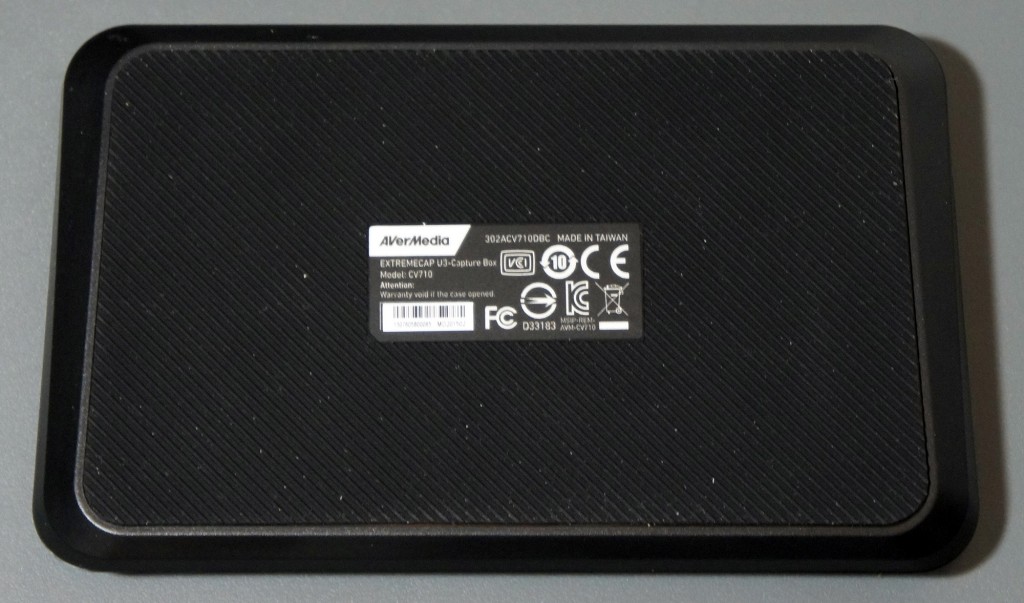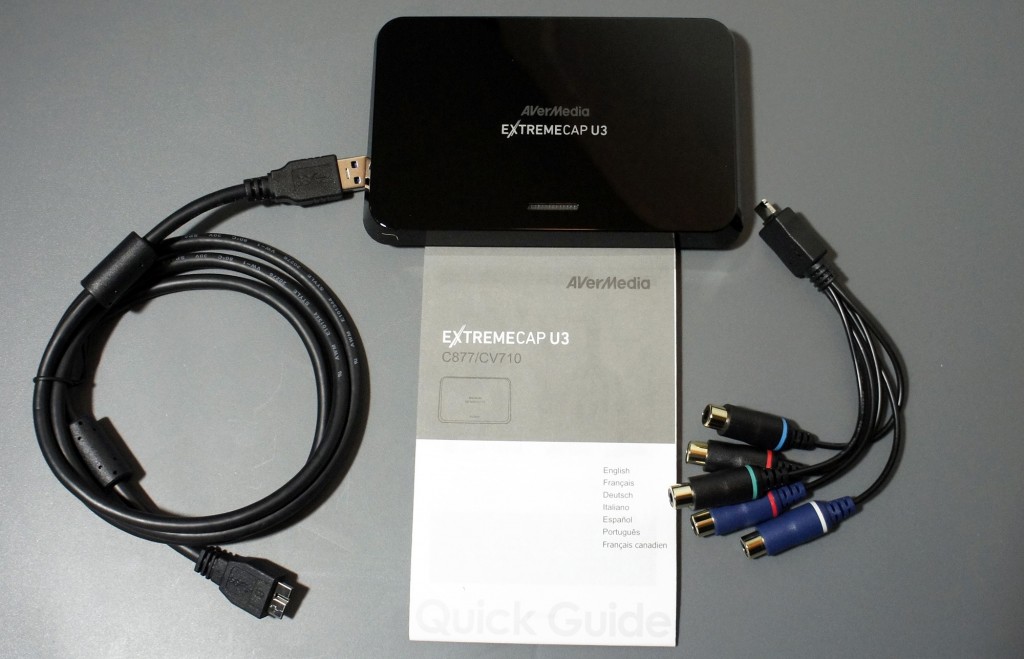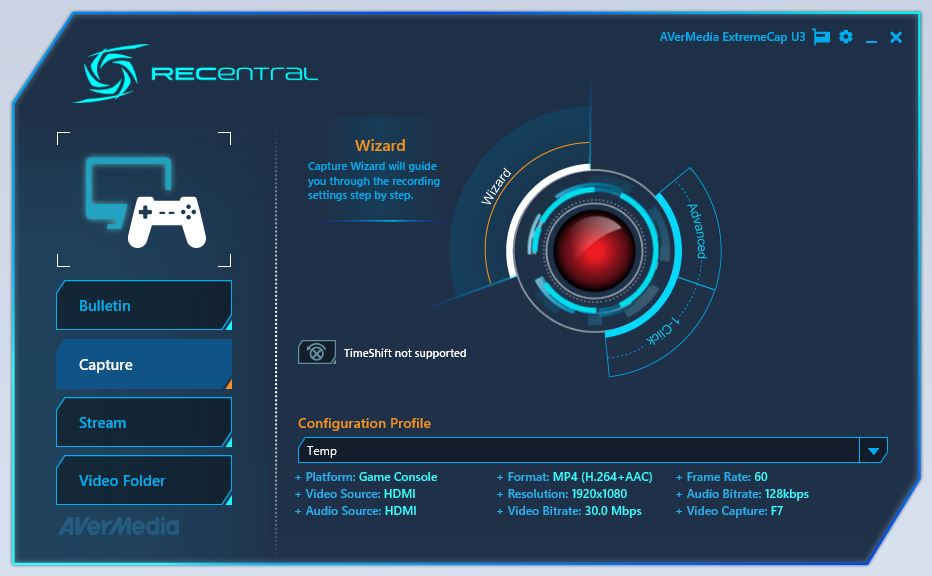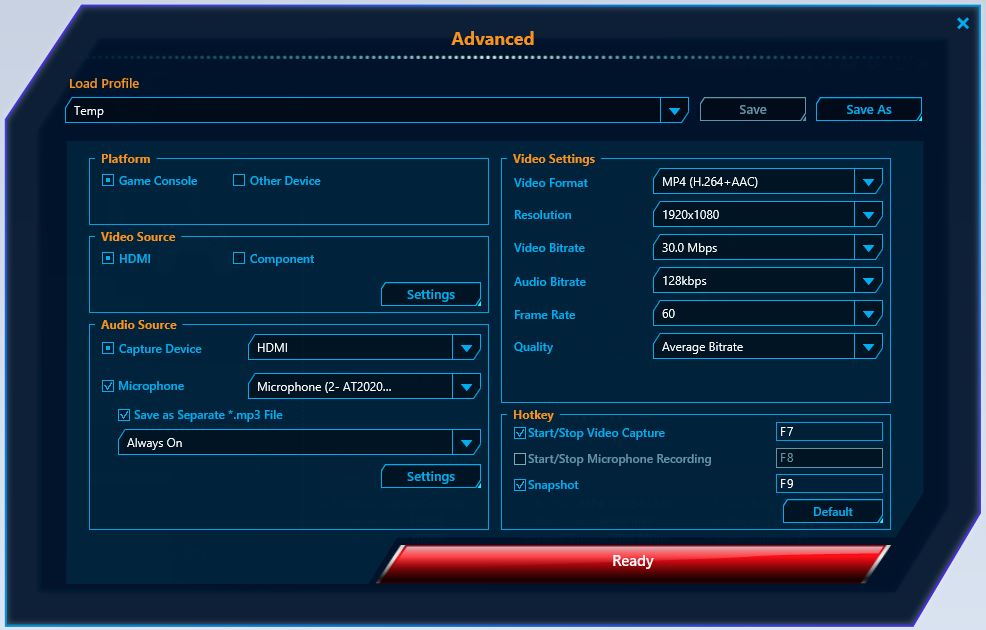game
5 Video Game Remasters We Actually Want
I don’t think I’m the only one annoyed by what seems like a new video game remaster being announced each week. ‘Remasters,’ ‘Collections,’ ‘Definitive Editions’, or whatever term publishers are coming up with to trick people into buying old games, have been flooding the market lately and more will inevitably be announced shortly.
Perhaps the most disappointing aspect of these remasters is that most of them haven’t been adding any sort of real value aside from simply upping the game’s resolution and/or framerate. Take the most recently released remaster, Dark Souls II: Scholar of the First Sin, for example. The game is a 1080p and 60fps version of Dark Souls II, complete with all three DLC packs from the game. That’s about it.
Sure, the Scholar of the First Sin increased the maximum amount of players in an online game from four to six and changed enemy spawn locations, but is that really enough to justify purchasing the game again if you already own it?
I know that there is some overlap here for gamers who missed out on playing certain games when they were released the first time around. However, the number of potential buyers who have never played the remaster is obviously much smaller when compared to the number before the release of the original game. Despite all of this, these kind of games must be selling well because, well, they keep on being made.
Does anyone remember in the early days of the PS4 and Xbox One, where if you owned a game like Battlefield 4 on PS3 or Xbox 360, you could upgrade to the PS4/Xbox One versions for as low as $10 for a limited time? That is essentially what you are getting now, a PS4/Xbox One version of the same game, except, in most cases, you are paying the full $60 price of a video game.
Fortunately, a few developers actually understand how to do a remaster right and actually give you the best bang for your buck.
Rockstar added the highly anticipated first-person mode to the PC, PS4, and Xbox One versions of Grand Theft Auto V, as well as some new missions, weapons, and vehicles.
State of Decay developer, Undead Labs, is offering a 33% discount on the purchase of State of Decay: Year-One Survival Edition to those who already own a copy of State of Decay on Xbox 360 or PC. The PC version of the recent Sleeping Dogs remaster is also worth mentioning, as the Definitive Edition on PC was only $30, or $15 if you owned the original game. Xbox One and PS4 versions were still $60, though.
Networking issues aside, the Master Chief Collection on Xbox One is the perfect example of a remaster done right. Not only could you play Halo: Combat Evolved on Xbox Live for the first time ever (when you could actually get matchmaking to work), but Halo 2 received the full “Anniversary” treatment as well.
Like the Halo: Combat Evolved Anniversary Edition which came out in 2011 for Xbox 360, the Master Chief Collection version of Halo 2 received a dramatic facelift. The resolution and framerate were bumped to 1080p and 60fps respectively, and every cutscene from the original Halo 2 was remastered and given stunning new cinematics by Blur Studio. There were also new hidden collectibles to find that dove deeper into the Halo lore in preparation for Halo 5. Additionally, six of Halo 2’s multiplayer maps were re-made entirely on the Xbox One engine by Max Hoberman (former lead designer at Bungie) and his current studio, Certain Affinity.
Combined, all of these features easily give you enough value to justify the full $60 retail price of the game. Oh, and let’s not forget that the Master Chief Collection also included remasters of Halo:CE, Halo 3, and Halo 4, as well as exclusive access to the Halo 5 beta.
All of these remasters have gotten me thinking of the games I would like to see re-made to play on current generation consoles, in a fashion similar to the Master Chief Collection. By re-made, I mean updated graphics, remastered cutscenes, and other unique features that would help warrant a purchase. I’m going to take the easy way out and imagine we’re in a perfect world where cost and development time on actual game projects would not be affected by creating these remasters.
Hot on the heels of the rumored Batman Arkham series collection, here are my top five choices for remasters that we gamers deserve and need right now:
1) Kingdom Hearts Collection – Kingdom Hearts 1.5 & 2.5 (Xbox One, PS4)
Few video games serve the purpose of uniting our inner child with our inner nerd better than Kingdom Hearts does. With Kingdom Hearts III now in development, a complete Kingdom Hearts collection released in the near future would serve the purpose of providing a refresher on the story (which spans a total of 7 games – 2 on consoles, 5 on handhelds), while attracting new gamers to the series, which originally launched in 2002.
Having all seven games in one place, with remastered graphics and cutscenes, would be a hard deal to pass up. Additionally, an Xbox One version released ahead of the Kingdom Hearts III launch (release date to be announced) would mark the first time a Kingdom Hearts game could be purchased for Xbox and would surely sell well. Interestingly enough, Kingdom Hearts 2.5 was just released on PS3 only in December 2014. Could a complete collection on PS4 and Xbox One follow soon after?
2) Marvel’s: Raven Collection – X-men Legends, X-men Legends II: Rise of Apocalypse, Marvel: Ultimate Alliance 1, & Marvel: Ultimate Alliance 2 (PC, Xbox One, PS4)
One of my favorite developers from the early 2000’s, Raven Software made a name for itself with the awesomely fun Star Wars Jedi Knight games. From there, Raven hit their stride with the X-men Legend and Ultimate Alliance games; top-down multiplayer action RPG’s. Diverse and expansive character rosters, combined with interesting stories and enjoyable gameplay, helped cement the series as a must-buy among Marvel fans and gamers alike.
Aside from Marvel Heroes and Lego Marvel, Marvel has been lacking in the video game department for years. Alternatively, DC has had bigger hits recently like Injustice: Gods Among Us and DC Universe Online. Throw together a collection of remastered versions of Raven's Marvel games, with some new exclusive characters and costumes added to the rosters, release it around the same time of the next big Marvel movie, and you might as well be printing money.
P.S. Before you start throwing things at me, the only reason why a Jedi Knight game didn’t make my list is because I already picked a different Star Wars series below. Also, I know Ultimate Alliance 2 sucked; I just threw it in the Raven Collection for completeness. You don’t have to play it if you don’t want to.
3) Team ICO Collection: Ico & Shadow of the Colossus (PS4)
Arguably two of the best adventure games of all time, Ico and Shadow of the Colossus are cult classics from the PS2 era. Even to this day, I don’t think I’ve come across another game that I thought was as gorgeous and atmospheric as Shadow of the Colossus was when I played it for the first time.
Now I know this collection has been done before, as evidenced by the box art above, but that was simply an HD remaster.
Ico looked great and Shadow of the Colossus pushed the PS2 to its technical limits when it came out a few years later. Can you imagine what these games would look like if they were completely remastered on a PS4 engine? I can’t. The thought of it is too beautiful.
Revealing the Team ICO Collection at this year’s E3 for a Holiday 2015 release would help strengthen the PS4’s weak remaining 2015 lineup, especially considering that Uncharted 4 has been pushed back to 2016. Hopefully Team ICO would be kind enough to add in some new developer diaries for The Last Guardian as a bonus feature in the Collection, which would help to ease fans concerns over the game’s prolonged development.
4) Banjo-Kazooie Collection: Banjo-Kazooie, Banjo-Tooie, and Banjo-Kazooie: Nuts and Bolts (Xbox One)
“Guh-huh!” It’s been almost 7 years since everyone’s favorite bear-with-a-bird-in-his backpack graced our consoles with his presence. It’s been even longer since he was actually in games as awesome as Banjo-Kazooie and Banjo-Tooie were. Nuts and Bolts was just okay, but it was missing a lot of the heart and sense of adventure that made the first two Banjo installments great.
Remastering the Banjo games for the Xbox One would then pave the way for a brand new Banjo-Kazooie titles to launch down the road. This would be a welcome addition to the Xbox One library of exclusives, which is primarily comprised of relatively dark games with lots of shooting at the moment.
Recently, when Phil Spencer, Microsoft’s Head o’ Xbox, was asked about the possibility of Banjo being voted into Super Smash Brothers for Wii U, he had this to say: “I think it would be cool if Banjo was in the next SSB DLC. We've worked with Nintendo on Rare IP before, no issues.” If, by some miracle, Banjo gets enough votes to make it into Smash as DLC, it would be a huge win for Xbox. They would be dumb not to capitalize on that success by having new Banjo games available to play.
5) Star Wars: Knights of the Old Republic 1 & 2 (PC, Xbox One, PS4)
Star Wars: Knights of the Old Republic (KOTOR) was one of the first RPG’s that I ever played. The game boasted a great story filled with twists and a memorable cast of characters and companions alike. Who could forget HK-47 in all of his meatbag hating glory?
KOTOR made a lasting impression on me due to the fact that my decisions actually had an impact on the outcome of the game’s story. I could be the Jedi that I wanted to be, which felt pretty damn cool, especially when you got to build your own lightsaber and explore the galaxy in the Ebon Hawk, the precursor to the Millennium Falcon.
I know I’m not alone when I say that a remastered version of KOTOR 1 & 2 would be my top choice out of all of the games on this list. Now I don’t want to say this remaster will never happen, because I never deal in absolutes. That being said, this remaster will probably never happen. We would certainly be more likely to see a Mass Effect Trilogy remaster (“The Shepard Collection”?) before a KOTOR remaster, but then again, you’re never supposed to tell me the odds.
Well, there you have it. The top 5 video game remasters I would willingly buy and play. Do you agree or disagree with my choices? What video games would you like to see remastered? Be sure to let us know by leaving a comment below or on our Facebook and Twitter!
Review: AVerMedia CV710 ExtremeCap U3 Capture Card
When Michael presented the idea to me of creating videos for the gaming section of Not Operator, I thought it would be a good idea. I told him it would be easy to stream and capture PC games, but our only option for Xbox One would be using Twitch.tv, and we wouldn’t have any way to capture Wii U gameplay. He suggested we get ourselves a game capture card for review.
Having never looked into the world of capture cards before, I didn’t really know what I was looking for, and I didn’t know any of the major brands that create capture cards other than Hauppauge (which is known for their TV Tuner cards anyways).
I began researching products, looking up reviews, and checking forums to see what the most commonly recommended capture cards were. What I found was that many existing capture cards have been on the market for a few years already; very few came out within the last year. The side effect of this is that many capture cards have a variety of limitations, such as not being able to capture 1080p video at higher than 30 frames per second, the inability to capture sound, or requiring some weird mess of cables to get working. This includes capture cards up into the $300 range.
Soon after, I discovered that many people suggested some Japanese brand capture cards that would have to be imported to the US, and still wouldn’t even capture audio. I thought this was a strange thing. Considering how popular game streaming and Let’s Play videos are on Youtube, I would’ve expected a variety of well-known companies to have entered the capture card market.
In any case, after researching for a while longer, I settled on the AVerMedia CV710 ExtremeCap U3 capture card. The ExtremeCap U3 released in late September 2013, and promised features such as 1080p game capture at 60 frames per second, and audio capture (including the ability to capture audio from a microphone attached to the PC), all in a tiny form factor that is ridiculously easy to set up and use as it relies only on a USB 3.0 connection to the PC. AVerMedia was gracious enough to send one for us to review.
Here are the specs for the CV710 ExtremeCap U3:
Specifications –
- Input:
- HDMI
- Component
- Recording Format:
- MP4 (H.264, AAC)
- Chroma Subsampling:
- YUV 4:2:2
Applications –
- Bundled Software:
- AVerMedia RECentral
- USB 3.0 Diagnosis Tool
- 3rd Party Plug-ins:
- Adobe Premiere Pro CS6
- Sony Vegas Pro
- Compatible Software:
- DirectShow compliant software: e.g., XSplit, OBS, AmaRecTV, Potplayer
System Requirements for PC –
- For FHD 1080p 60 FPS recording (H.264):
- Desktop:
- CPU – Intel® Core™ i5-3400(Ivy Bridge) or above
- Graphics Card – NVIDIA GT630 or above
- RAM – 4 GB
- Laptop:
- CPU – Intel® Core™ i7-3537U 2.0 GHz(Ivy Bridge) or above
- Graphics Card – NVIDIA GT 735 M or above
- RAM – 4 GB
- For HD 720p 60 FPS recording (H.264):
- Intel® Core™ i3-3200 series with Ivy bridge platform and 4 GB RAM
- Intel chipset with native USB 3.0 host controller (Can be used together with these certified chipsets: Renesas, Fresco, VIA, ASMedia)
- Power requirement: USB 3.0 power
- Graphics Card: DirectX 10 compatible
- Windows 8.1 / 8 / 7 (32 / 64 bit)
- Desktop:
System Requirements for Mac –
- OS: Mac OS X v10.9 or later
- CPU: i5 quad-core or above for FHD 1080p 60 FPS recording (H.264)
- Power requirement: USB 3.0 power
- RAM: 4 GB or more
- HDD: At least 500 MB of free space
In the package –
- ExtremeCap U3 (Weight: 182g)
- Quick Installation Guide
- USB 3.0 cable
- Component Video / Stereo Audio Dongle Cable
The ExtremeCap U3 was incredibly easy to set up. First, I plugged the device into a USB 3.0 port on the computer. Next, I installed the latest software and drivers for Windows (since the PC used was running Windows 8.1). Interestingly enough, all the downloads on AVerMedia’s AP & Driver page have a counter for how many times each file has been downloaded. Considering the driver and software package we needed has been downloaded approximately 2000 times, it seems like we’re in a fairly small group of people that have an ExtremeCap U3.
Once that was done, we opted to run the bundled USB 3.0 Diagnosis Tool which checks to make sure that the USB 3.0 chipset on the computer is compatible with the ExtremeCap U3. Our system is running on the Intel X79 chipset, which lacks native USB 3.0 support, but the Fresco FL1009 powered USB 3.0 ports on our Gigabyte X79-UD7 were deemed fully compatible with the ExtremeCap U3.
We plugged our Wii U into the ExtremeCap U3 using an HDMI cable, and fired up the AVerMedia RECentral software. The menu that greeted us was fairly straightforward, giving us the option to choose whether we wanted to capture video or stream; and in both cases we could opt to use the Wizard to walk us through setting up our options. Alternatively, we could choose the 1-Click setting option which would automatically choose the recommended settings, or pick the Advanced setting option to be able to manually set everything up.
We went through the Wizard and used the 1-Click option, both of which worked flawlessly, but we preferred to choose our own settings manually to be able to tweak them, so we ended up using the Advanced settings option for our recording.
In the Advanced menu, we could tweak a variety of settings. The most notable options were the video format, resolution, framerate, and bitrate. We also could opt to record audio from a microphone connected to the PC and save it in the same file or as a separate mp3, which we found to be exceptionally useful for our video.
Once the settings were chosen, we were ready to go. We hit the ‘Ready’ button on the menu, and got to playing. Recording was a simple operation, it was just started/stopped with the press of a single button or desired key combination.
We found the recording quality to be exceptionally good. We opted to capture 1080p video with a 60 FPS framerate, an audio bitrate of 128 Kbps (since we were recording in stereo, that ends up being a bitrate of 256 Kbps), and a video bitrate of 30 Mbps. Our video bitrate was probably a fair bit higher than what’s necessary to record even at that resolution and framerate, but since our setup includes a 4x4TB RAID 10 array (8TB effective size), we weren’t too concerned about being frugal with our hard drive space.
While recording our first episode of Digital Ops (where we played the Battlefield Hardline Beta), we started out recording using the Xbox One’s Twitch.tv application, and then switched to the ExtremeCap U3. The difference in quality was staggering, as can be seen in the screenshots below.
To see how video recorded with the ExtremeCap U3 looks, check out Episode 1 of Digital Ops here. We recommend viewing it using Google Chrome, as Youtube allows for 1080p video to be played at 60 FPS when accessed using Chrome.
Overall, we came away extremely impressed with the AVerMedia CV710 ExtremeCap U3 capture card. The build quality feels great, it’s small and fairly portable, it’s extremely easy to set up and use, and the software is fantastic. At a retail price point that is currently hovering around $170, it’s not the cheapest card on the market, but it certainly cannot be beaten on features or ease of use. We’d have no hesitation in recommending the ExtremeCap U3 to anyone looking to buy a capture card.
Evolve – The Next Evolution of Multiplayer?
I remember the first time I played Evolve. At Comic Con last year, I braved the cosplaying hordes and made my way over to the Manchester Grand Hyatt to check out the Xbox Lounge and play some of the exclusive game demos within. When I walked into the Lounge, my attention immediately focused in on a large poster in the corner of the ballroom; a monstrous mark in the mud eerily reminiscent of the infamous T-Rex footprint from Jurassic Park, with just the phrase “EVOLVE” displayed above. I sped my way over to the demo area where I was greeted by a friendly team of the game’s developers, Turtle Rock Studios: “Do you want to play as the Monster?” I smirked, grabbed the controller, and proceeded to mercilessly eviscerate all four of the human-controlled hunters as the Cthulhu-like creature known only as Kraken. Sadly, during the time I’ve spent playing Evolve in the Big Alpha and open beta, and due the recent controversy over the game’s downloadable content, nothing has come close to matching my excitement since that first match back at the Xbox Lounge.
Evolve pits a team of four hunters, each with their own unique skills and weapons, up against one player-controlled monster in “asymmetrical multiplayer” battles. This means that the different teams, the hunters versus the monster in this case, have vastly different abilities at their disposal.
Player Types
The hunters are comprised of four classes, Assault, Support, Trapper, and Medic, and each have four unique skills to use, including a firearm. Monsters, which also have four distinctive powers, kill and eat AI wildlife in order to gain extra armor and eventually evolve, which endows the creature with more health and increases the damage of their abilities. Evolve was flawlessly described as “an intense game of Cat and Mouse where after enough cheese, the mouse can eat the cat.” This is Evolve at its core.
Environment
When the game launches in February it will have four multiplayer modes that span twelve maps. The maps add some diversity to the gameplay by throwing environmental hazards at the players in the form of both passive and aggressive AI wildlife, carnivorous plants that will swallow hunters whole, and more. Essentially, these threats were designed to add another element for the players to worry about on top of the hunter-monster battle. However, once you have played the maps and learned what and where these hazards are, as well as how to avoid them, that element of unpredictability is completely removed from the game. This just returns the players to the basic find the monster/kill the hunters gameplay, and the environmental threats become more of an annoyance than something that adds value to the game.
Game Modes
The four multiplayer gametypes are:
- Hunt – The basic ‘hunters versus the monster’ mode
- Rescue – The hunters have to revive and escort five AI human survivors to evacuation sites before the monster can kill five survivors
- Nest – The hunters have to destroy six monster eggs spread throughout the map within ten minutes, and the monster can hatch eggs to create monster minions to fight with
- Defend – A MOBA-like mode where a fully evolved monster and waves of monster minions attempt to destroy two generators before finally attacking a ship full of survivors.
It is important to note that despite the game modes having different objectives, they can all be ended immediately if all four hunters are killed by the monster, or if the monster is killed by the hunters. From a gameplay perspective that decision makes sense, but it detracts from the value of playing modes other than Hunt, due to the fact that every other game type is basically just another Hunt match with an added objective. There has been no confirmation from Turtle Rock that they are working on new gameplay modes for Evolve, which could really hurt the replay value and cause gamers to get bored of the game quicker than anticipated.
In addition to the four modes listed above is Evacuation, Evolve’s self-proclaimed “dynamic campaign.” However, aside from an introductory trailer that scratches together the surface of a story for the game, Evacuation simply strings together the four basic game modes over five multiplayer matches called “days,” culminating in a final round of Defend. The twist to Evacuation is that the winning side of each match gets some sort of advantage for the next round. For example, if the hunters win, in the very next match there may be some auto-turrets that attack the monster, and if the monster wins, there could be a large poisonous gas cloud that damages hunters when they are close to it. According to Turtle Rock, there are over 800,000 possible scenarios created by these advantages. However, the advantages merely result in another aspect to keep an eye out for in a match, not unlike the environmental hazards mentioned earlier. Even more disappointing here is that Turtle Rock blanketed one brief trailer over the four multiplayer modes already in the game, added some more hazards on top of the preexisting ones, and decided that was good enough to comprise Evacuation’s “dynamic campaign.” Calling it so is extremely misleading to the average customer, especially if they are on the fence deciding whether or not to pick up Evolve, notice the words “dynamic campaign” written somewhere on the back of the box, and buy the game thinking it has some sort of story mode. It does not.
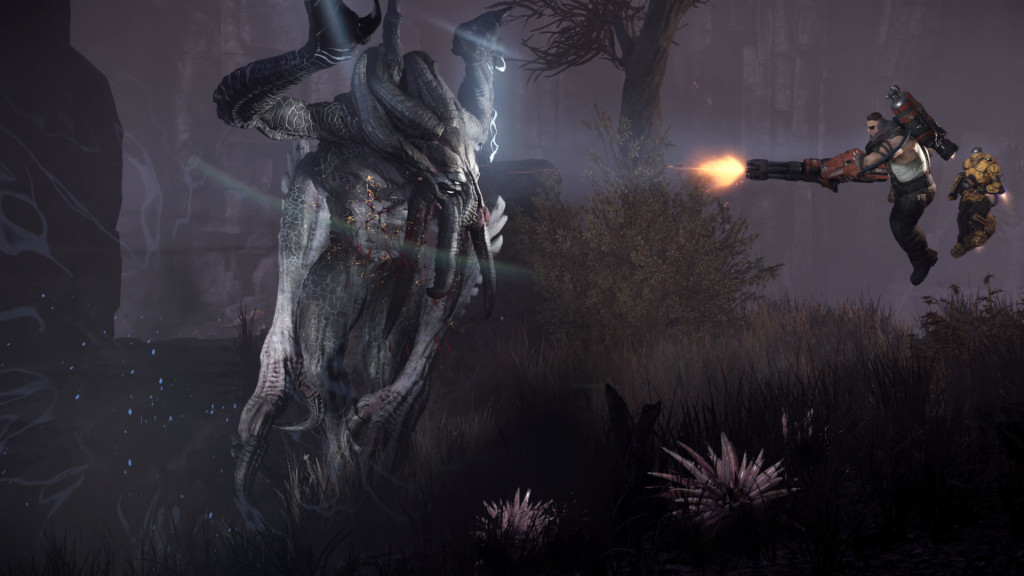
Downloadable Content
Evolve will ship with twelve maps, twelve hunters (three characters per class), and three monsters. Turtle Rock recently announced that the fourth monster, Behemoth, will be available for download in the spring for free if you pre-order the game. Conversely, if you do not pre-order Evolve and use the downloadable Behemoth code before midnight on the game’s release date, the only way to acquire Behemoth will be through a $14.99 purchase.
Additionally, if you have any interest in acquiring new hunters down that road, the Hunting Season Pass offers four new hunters and three monster skins that will set you back $24.99, but would retail at around $30 if all items within sold individually. Compare these prices to Destiny, for example, which sold its first “expansion,” The Dark Below, for $19.99. The price appeared to be pretty steep for just a handful of new story missions, a few Strikes, and one Raid, but it is quickly starting to look like a better deal compared to what’s happening with Evolve. Keep in mind, the Hunting Season Pass and Behemoth DLC only cover the first wave of downloadable characters. Any other hunters or monsters released down the road are going to cost you even more.
At this price point, Turtle Rock is effectively equating the value of one monster to a quarter of the total value of the game, and four hunters at approximately one-half. Now, I won’t pretend to understand all of the intricacies that go into creating new monsters and hunters. I am sure “it takes a lot of time, iteration and careful balancing”, and these prices are an attempt to reflect that. As a gamer who, despite what developers and publishers may think, is not made of money, it is disheartening knowing that before I even throw down the $60 to buy the game, there are all of these new hunters and monsters on the horizon. Together they’re expensive enough that I would be paying more than another full priced copy of the game if I want the chance to play all of the new hunters and monsters.
For an even better deal, Evolve is selling a Digital Deluxe version, combining the regular Evolve game with the Hunting Season Pass for just $80, a whopping $5 discount when compared to buying the game and Hunting Season Pass separately. Better yet, if you have a quality gaming PC, and are a baller, you can purchase the “PC Monster Race” edition of the game for $100, which gets you: the game, the Hunting Season Pass, Behemoth, the yet to be announced fifth monster, and two more hunters. Now if all of these different DLC’s and season passes seem like a lot to keep track of for game that has yet to be released, you are not alone. When the Creative Director of your game has to come out to publicly defend the DLC strategy, you might want to start rethinking how you got to this point. But hey, at least Turtle Rock is giving away any additional maps they crank out for free!
Online Play
Despite all of these flaws, the game really shines and is genuinely fun when there is a fully coordinated team of hunters playing together against an intelligent monster. It is a beautiful sight when every class is performing their role perfectly; the Trapper has the monster imprisoned within an impenetrable dome and is keeping it pinned to the ground with harpoons, Assault is blasting away at the monster and using their temporary invulnerability shield when they start to take damage, Support is cloaking nearby teammates raining down orbital strikes, and the Medic is doing their best to keep everyone’s health up. The downside to this is that you’ll need a solid group of four friends who understand their roles and communicate with each other. At least through my experiences in the alpha and beta, the odds of playing random games with competent hunters were minimal. Hopefully this will change after the game is released, because going into a match as a hunter without any friends or a coordinated effort can get tiresome fast. Even playing as the monster against a team of hunters who have no idea what they are doing does not really yield any satisfaction when you effortlessly rip them apart.
Offline Play
Also worth mentioning is that the game will come with an offline mode where the player will be able to play the game with bots in lieu of real people. Personally, I feel that playing solely against AI opponents would take even more unpredictability out of the game, but I can also see how playing against the computer could alleviate the concerns of some casual gamers who either do not like or are having trouble competing online.
Conclusion
I want Evolve to do well, do not get me wrong. I would love nothing more than to see the game sell tons of copies, as I have faith in gamers to support new IPs with exciting ideas rather than those just rehashing the same formula in order to hit that next annual release. However, I just wish that the game would have shipped with more value to the customer to help rid the bad taste from our mouths due to the DLC strategy (which I would like to believe was pushed on Turtle Rock by their publisher, 2K Games). Evolve could easily be the recipient of a large sales boost solely from the fact that there are not any AAA multi-platform games being released in the near future other than Dying Light (depending on your definition of AAA), which comes out on January 27th, and Battlefield Hardline on March 17th. Perhaps there will be enough content and variety in the game to make it sustainable and have an active community for the foreseeable future. If so, hopefully we will get to see an Evolve 2 that has learned from the lessons of the past. Until then, happy huntin’.
Evolve stomps into stores on February 10th, on PC, PS4, and Xbox One.



